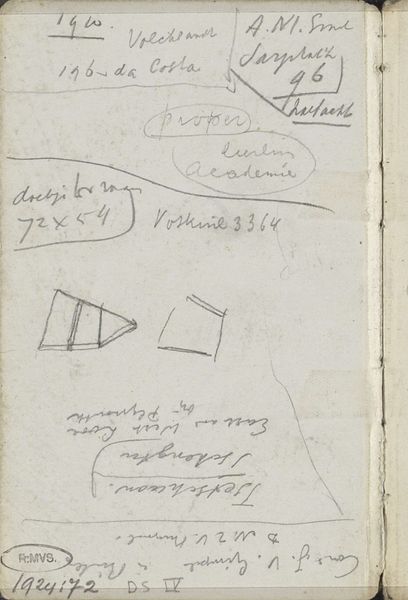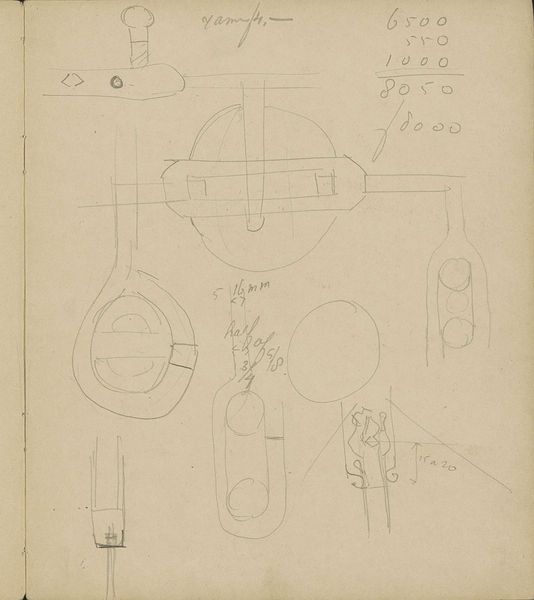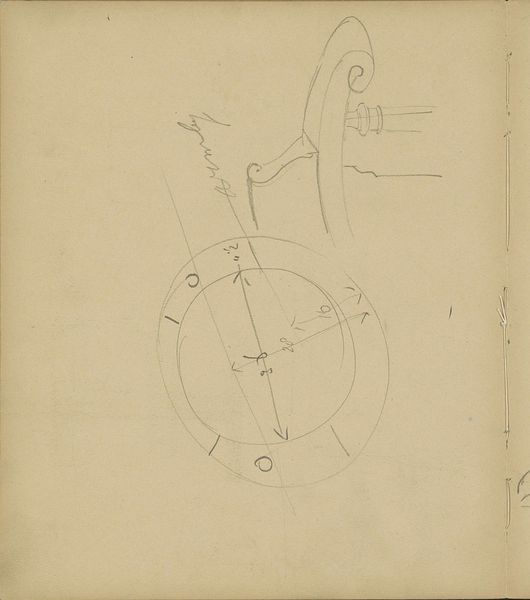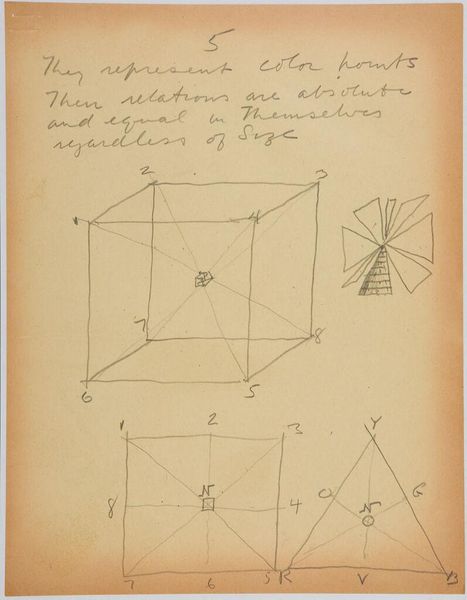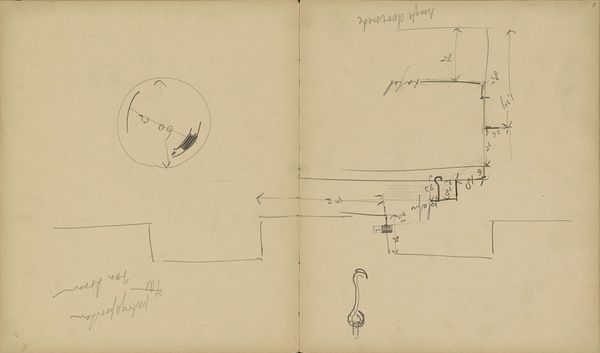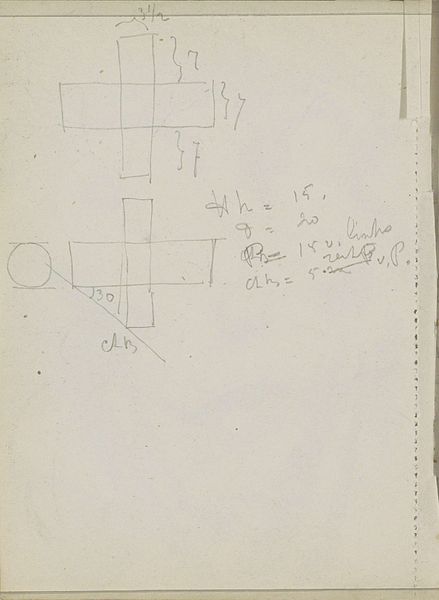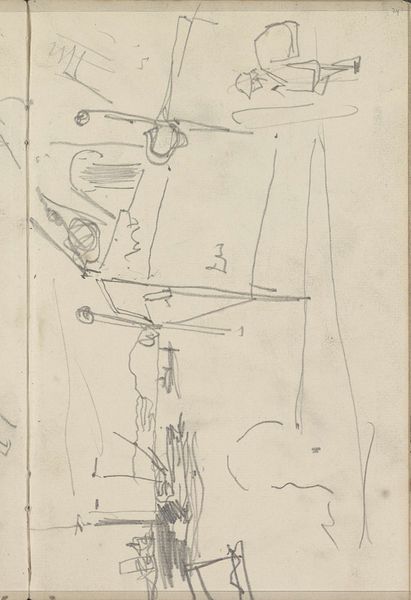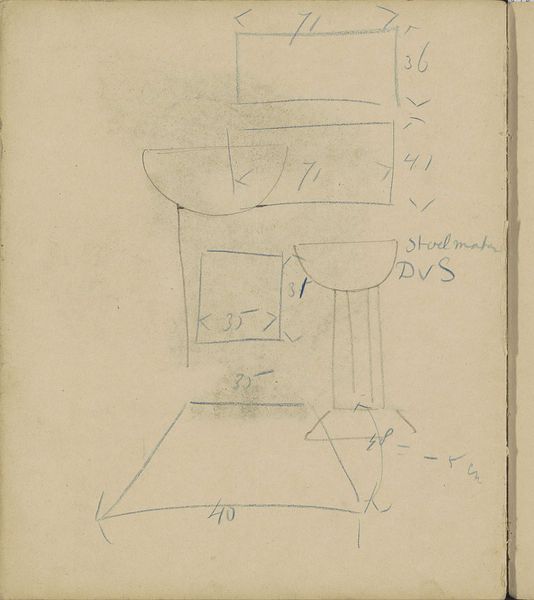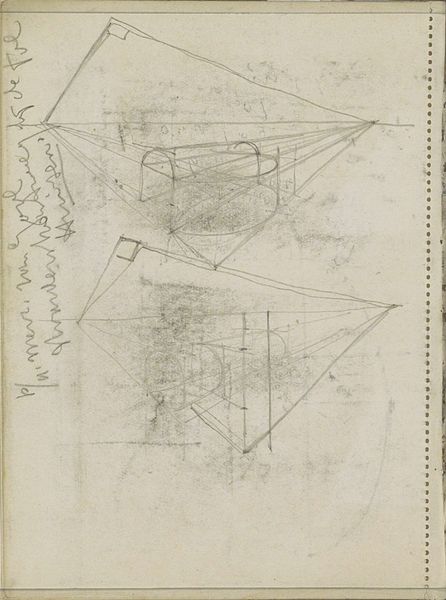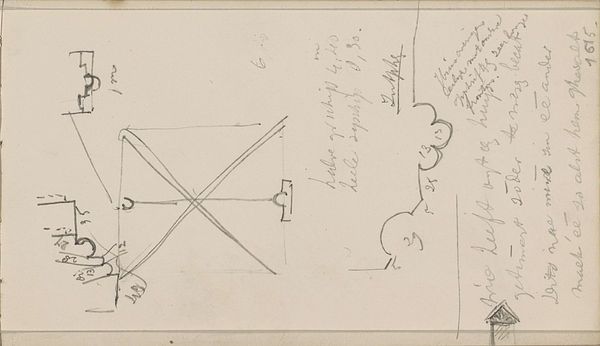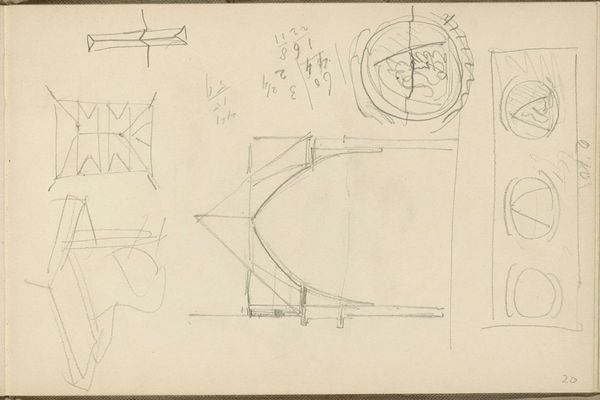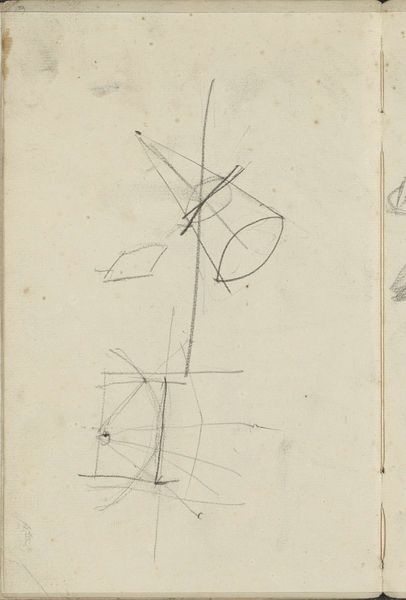
drawing, paper, pencil
#
drawing
#
comic strip sketch
#
aged paper
#
sketch book
#
hand drawn type
#
paper
#
personal sketchbook
#
idea generation sketch
#
sketchwork
#
geometric
#
sketch
#
pencil
#
sketchbook drawing
#
storyboard and sketchbook work
#
sketchbook art
Copyright: Rijks Museum: Open Domain
Curator: This intriguing sketch by Carel Adolph Lion Cachet, aptly titled "Studies," dates to around 1906 and comes to us courtesy of the Rijksmuseum collection. It’s rendered in pencil on paper. Editor: It's chaotic, in the best way. Like looking directly into the whirlwind of an idea taking shape. Scribbled geometry, hints of objects, a sense of controlled madness all on aged paper. Curator: Indeed, and as the title suggests, what we are seeing is Lion Cachet’s visual brainstorming—a behind-the-scenes glimpse into his creative process. He seemed to be concerned with dimensions, there are notations with numbers sprinkled everywhere. Editor: Numbers and shapes dance across the page! It feels mathematical, almost architectural, but there’s a lyricism in the way the lines are laid down. A sort of... geometric poetry. And what is that circular form? Something celestial? Curator: Perhaps. Cachet's background included decorative design, particularly wood carving and textile art, so these studies may relate to a specific commission, maybe some geometric planning for textile or wooden design. Editor: Oh, that makes perfect sense! Now that you say that I can imagine these elements translated into the tactile textures of fabric or the sharp lines of carved wood. It brings to mind patterns repeating into infinity. It also hints that even finished piece we see on display have origins in humble sketches such as these. It takes out some the grandeur and replaces with warmth of commonality of practice. Curator: Precisely, sketchbooks, personal notations are an often hidden dimension behind finished artworks. This shows how vital studies such as these are in art, but are invisible to audiences. These studies offer a raw look into an artist's mind and working process during the start of the 20th century. Editor: Seeing it this way gives me such a different perspective, and newfound appreciation. It feels less like art history, more like a shared human moment—thank you. Curator: My pleasure, let's move on to the next artwork.
Comments
No comments
Be the first to comment and join the conversation on the ultimate creative platform.
